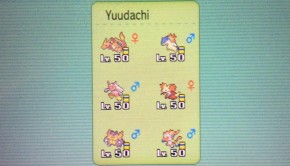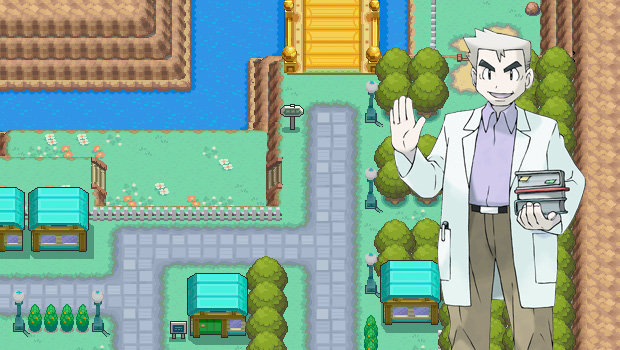Don’t Sleep on the Job: A Guide to Status in VGC
Even at the very beginnings of their journeys, every trainer has known the dreaded effects of a status change. In Viridian Forest, a Weedle poisons your beloved new Charmander and he begins to see skulls. Seeing it cough and gasp for proper breath as its HP drops, you run to the nearest Pokémon center, hoping to make it there in time. You watch as your opponent’s Drowzee puts you to sleep, and you must sit and wait as your Pokémon naps on the field of battle while Drowzee devours it dreams. Finally, your Pokémon wakes up, only for the opponent to put it right back to sleep again the same turn.
Yes, status ailments truly stay with us as one of the defining features of a Pokémon battle. And just like in any other battle, whether it be in-game or standard 1 vs. 1 play, status effects can mean the difference between winning and losing in the VGC metagame. But fear not, for I’m here to show you, yes you, how to become the master of the status effects and how to prepare for the worst and know how to handle your Pokémon in tricky situations such as these.
Major Status Effects



Paralysis
Paralysis is probably the easiest status to abuse, considering its high distribution and Thunder Wave’s perfect accuracy. Paralysis cuts the affected Pokémon’s Speed to one quarter its regular amount, and the paralyzed Pokémon has a 25% chance of becoming “Fully Paralyzed” in a turn and being unable to move. It can turn speedy and deadly Pokémon such as Latios and Zapdos into sitting ducks to an onslaught of powerful opposing attacks from the opponent and can majorly wreck strategies if lady luck decides to fully paralyze the Pokémon. However, Ground-type Pokémon are naturally immune to Electric-type attacks and are therefore also immune to Paralysis except when caused by Glare, Body Slam, Tri Attack, Stun Spore, or Effect Spore. The two main abusers of Paralysis are Thundurus, whose Prankster gives Thunder Wave +1 priority, and Cresselia, who likes to disable the opponent’s Pokémon so that her allies can tear them apart.
Main moves than inflict Paralysis:
-Thunder Wave (100% accuracy, 100% chance of Paralysis)
-Stun Spore (75% accuracy, 100% chance of Paralysis)
-Body Slam (100% accuracy, 30% chance of Paralysis)
-Discharge (100% accuracy, 30% chance of Paralysis)
-Thunder (70% accuracy in no weather, Hail or Sand; perfect accuracy in Rain; or 50% in Sun with 30% chance of Paralysis)
-Thunderbolt (100% accuracy, 10% chance of Paralysis)
-ThunderPunch (100% accuracy, 10% chance of Paralysis)
-Tri Attack (100% accuracy, 6.67% chance of Paralysis)
Abilities that inflict Paralysis:
-Static (30% chance of Paralysis on physical contact)
-Effect Spore (10% chance of Paralysis on physical contact)



Burn
At first glance, being Burned is very similar to being Poisoned — Burn saps away 1/8th of the Pokémon’s total HP each turn. Upon closer inspection, however, the Burned status effect has a much more potent side effect: it cuts the afflicted Pokémon’s Attack stat in half. This can turn once-mighty powerhouses such as Terrakion and Metagross into puppies and whittle away at their precious HP as their attacks just bounce off their opponents. Be warned, however, that Fire-types and Pokémon with Flash Fire are immune to the Burned status effect, so Pokémon such as Darmanitan remain rampant tools of destruction. Sableye is probably the main abuser of Burn, as its Prankster ability gives Will-o-Wisp +1 priotity, instantly disabling a Pokémon from turn one. Pokémon that can also launch powerful Fire-type attacks, such as Zapdos and Chandelure, appreciate the Burn chance of these attacks.
Main moves that inflict Burn:
-Will-o-Wisp (75% accuracy, 100% chance of Burn)
-Fire Blast (85% accuracy, 10% chance of Burn)
-Flamethrower (100% accuracy, 10% chance of Burn)
-Flare Blitz (100% accuracy, 10% chance of Burn)
-Heat Wave (90% accuracy, 10% chance of Burn)
-Lava Plume (100% accuracy, 30% chance of Burn)
-Fire Punch (100% accuracy, 10% chance of Burn)
-Scald (100% accuracy, 30% chance of Burn)
-Tri Attack (100% accuracy, 6.67% chance of Burn)
Abilities that inflict Burn:
-Flame Body (30% chance to Burn on physical contact)



Sleep
Probably the most potent and feared status effect of all, but also the one with the worst distribution, Sleep is probably the most annoying status effect of all. Once a Pokémon has rested its eyes, it won’t wake up for 1-3 turns, making it absolutely useless. This is a good way to shut down a lot of strategies, as it can potentially disable a strong attacker for a few turns or get rid of a supporting Pokémon for awhile, allowing the partner Pokémon to demolish the opponent’s team. Switching out doesn’t help speed up the wake up — in fact it lengthens the snooze! — basically forcing the opponent to keep their Pokémon in and hope they wake up soon. So why isn’t Sleep seen more? The answer is simple: its distribution. Spore, the only 100% accurate Sleep move in the game, is only given to three Pokemon (Parasect, Breloom, and Amoonguss) who, as you might expect, are the best abusers of the status effect. The other sleeping moves either are too poorly distributed or too inaccurate to be worth the risk of missing. Sleep is also a special status effect in that it is the only one that can be self-inflicted regularly with the move Rest, which heals the Pokémon’s HP completely but puts it to Sleep — a great move to abuse with Pokémon who are highly defensive but lack proper recovery, such as Cresselia.
Main moves that inflict Sleep:
-Spore (100% accuracy)
-Hypnosis (60% accuracy)
-Rest (Self-inflicted)
-Sleep Powder (75% accuracy)
-Grasswhistle (55% accuracy)
Abilities that inflict Sleep:
-Effect Spore (11% chance on physical contact)



Freeze
Next to Sleep, Freeze is the second-most feared status effect. It completely immobilizes a Pokémon for an indefinite amount of turns and can only be cured by being hit by a Fire-type attack, using Scald, Flame Wheel or Sacred Fire, or flipping a coin and hoping for the thaw. The only downside? Freeze is the only main status effect without an attack like Thunder Wave or Will-o-Wisp that regularly causes Freeze. Most Ice-type attacks, however, will have a chance of Freeze. With Hail teams on the rise, so are the reported cases of Frozen Pokémon, but as the chances of a Pokémon being frozen are all based on luck, there is no single best abuser. Basically, any Pokemon with an Ice Beam or Blizzard highly appreciates freezing the enemy in its tracks at random.
Main moves that inflict Freeze:
-Blizzard (70% accuracy, 100% accuracy in Hail, 10% chance of Freeze)
-Ice Beam (100% accuracy, 10% chance of Freeze)
-Ice Punch (100% accuracy, 10% chance of Freeze)
-Tri Attack (100% accuracy, 6.67% chance of Freeze)



Poisoned
The Poisoned status causes the Pokémon to turn a sickly, purplish color and begin to lose 1/8th of their HP per turn. While this does sound potent, Poison is the least-common status effect in the metagame for a few reasons: only a small handful of moves cause the condition (the only non-attacking move that can cause it is PoisonPowder, which is almost never seen), it doesn’t have any secondary effects, and it is highly outclassed by the Badly Poisoned status effect. Despite this, there are a few good users of it: Roserade with Poison Point can annoy Fake Out users or other physical attackers with it while also defending its low Defense, and Toxicroak and Amoonguss can sometimes inflict Poison on Pokémon by using Poison Jab and Sludge Bomb, respectively. Note that both Posion- and Steel-type Pokemon are immune to both Poisoned and Badly Poisoned.
Main moves that inflict Poison:
-Poison Jab (100% accuracy, 30% chance of Poison)
-Sludge Bomb (100% accuracy, 30% chance of Poison)
-Sludge Wave (100% accuracy, 10% chance of Poison)
Abilities that inflict Poisoned:
-Poison Point (30% chance on physical contact)
-Effect Spore (9% chance on physical contact)
-Poison Touch (20% chance if a physical attack is used)



Badly Poisoned
Badly Poisoned is the better way to poison a foe. Under the Badly Poisoned status, the HP lost by the affected Pokémon increases each turn instead of staying constant, starting ad 1/16th the affected Pokémon’s HP and doubling every turn after. However, both Poisoned and Badly Poisoned are probably the least-seen status effects in the VGC metagame, though they have their uses. If your team is up against a highly-defensive threat such as Porygon2 or Milotic and you can stall with Protect for a long enough time for the damage to stack up against them, badly poisoning your opponent’s Pokémon can soften them up for your attacers. Every Pokémon that can learn TM moves can learn Toxic, but it is best left to defensive walls such as Vaporeon, Umbreon, Ferrothorn, and others who have a hard time inflicting damage regularly on a Pokémon.
Main moves that inflict Badly Poisoned:
-Toxic (85% accuracy,100% chance of Badly Poisoned)
Volatile (Secondary) Status Effects
Now that we’re done with the five main status effects, we move on to the more volatile, or secondary, status effects. These status effects, unlike the main ones, will not cause a little icon to appear next to the Pokémon, and can be cured by simply switching out or letting its effects take course. That in no way means they should be underestimated, as they can be as game-changing as any Burn or Paralysis on a Pokémon and can force the opponent to completely rethink their strategy. They are notable too in the fact that unlike the main status effects, they can be stacked upon a Pokémon at the same time as Paralysis, Sleep, etc. Here are the most common secondary status effects in the VGC metagame:



Confusion
Probably the most annoying of all the secondary status effects, Confusion will cause the affected Pokémon to “hit itself in its confusion” with a base 40 power, typeless attack 50% of the time instead of attacking that turn. The higher the Pokémon’s Attack stat is, the harder they can hit themselves. This makes Swagger especially annoying, as it sharply raises the target’s attack in addition to causing Confusion, making Confusion a valid damage source. Pokémon will be afflicted with Confusion from 1 – 4 turns or until switched out. Since all Pokémon that can learn TMs can learn Swagger, any Pokémon has a chance to confuse the opponent, but this job is best left to Prankster Pokémon such as Thundurus, Whimsicott, and Sableye, who gain priority when the move is used. Sableye is also notably the only Prankster Pokemon with access to Confuse Ray, which has 100% accuracy, unlike Swagger’s 90% accuracy. For more on the offensive and defensive possibilities of Swagger, check out our article Moves Like Swagger.
Main moves that cause Confusion:
-Confuse Ray (100% accuracy, 100% chance of Confusion)
-Swagger (90% accuracy, 100% chance of Confusion)
-Flatter (100% accuracy, 100% chance of Confusion)
-Hurricane (70% accuracy in no weather, Hail or Sand; 50% accuracy in Sun; or perfect accuracy in Rain, 30% chance of Confusion)
-DynamicPunch (50% accuracy, 100% chance of Confusion)



Encore
Encore locks the target into using their last used move for the next three turns. While this sounds dangerous at first, with many powerful attacks being thrown around, its potential is huge. One could potentially lock Cresselia into a support move for the next few turns, trap a Pokémon into Protect, or cause the opponent to be locked into a not very effective move for a while. Several Pokémon learn Encore, but Whimsicott is one of two Pokémon that can use the move and also has Prankster, making it the best abuser and giving it a reputation amongst many to cause it to be one of the most annoying Pokemon in the metagame.





Infatuation
Infatuation is the least common secondary status effect in the metagame, but its potential cannot be ignored. Acting as a slightly scaled-down version of Confusion, Infatuation causes an opposite gendered Pokémon to fall in love with the user. The infatuated Pokémon now has a 50% chance of becoming “immobilized by love” and unable to move for the turn. Infatuation’s general difficulty to set up is one of the reasons it isn’t as useful as Confusion, however, as it requires the opponent to be an opposite gender of the user of Attract or Cute Charm, and it won’t work on genderless Pokémon such as Terrakion and Metagross. Attract does have the benefit of hitting through a Substitute, though.



Taunt
Tired of your opponent setting up constantly? Then Taunt is the move just for you! Taunt causes its target to only be able to use attacking moves for the next three turns, which, on paper, sounds dangerous. In battle, though, it can be deadly. With the Pokémon being unable to Protect, you’re free to attack them as you please, and it can completely shut down some Pokémon such as Whimsicott and Sableye, who rely on status moves to be effective.
How to Use Status
![]()
![]()
![]()
Prankster and Status Effects
When GameFreak made Generation 5, they added in one of the most game-changing abilities ever: Prankster. Prankster adds +1 priority to any non-attacking move, opening up a whole new world in status effects. The importance of Prankster for status effects has already been hinted at in this article, but its impact is too huge not to discuss in more detail. Prankster has turned such weak Pokémon like Sableye, Whimsicott, and Murkrow into overnight stars of the VGC metagame. Prankster is also unique in that each of its users have something different to bring to the table: Whimsicott has access to priority Encore, Sableye is the only one with Will-o-Wisp and Confuse Ray, and Thundurus and Murkrow can paralyze the foe with Thunder Wave even before they can think of a way to react. All of them also have access to Toxic, Taunt, and Swagger to cause more trouble to the foe. If you’re wishing to abuse the benefits of status effects, consider any of these Prankster Pokémon to become a permanent member in your team.



How to Deal With Status
Alright, so now that you know the true power of status effects, what can you do to better prepare yourself when your opponent does the inevitable and uses them against your team? There are more ways than you think, actually. The best way to prevent your Pokémon from the five main status effects is by using Safeguard, which prevents your Pokémon from being afflicted by any of the five main status effects and Confusion for the next five turns. Magic Coat is less-commonly seen due to its poorer distribution, but it can also be devastating to your opponent because it bounces back any status move they use, making it so they can accidentally put their own Pokémon to sleep! Cresselia is the best user of these two moves as she has huge natural bulk to pull them off.
Taunt is another big way to counter status as it, as mentioned before, only allows the target to attack, which can protect you from the status abusers that are Sableye and Whimsicott for a little while. Be warned, as all Prankster Pokémon have access to Taunt and can prevent you from Taunting them first.
But what if all of that fails and you’re stuck with a Breloom on rampage? Fear not, for there are some held items that can protect you from status! Lum Berry is the best item to prevent against the main status effects, as it cures the holder instantly if it’s been afflicted. This item goes well with Scizor, Metagross, or other Pokémon who dislike having status turned on them. To protect against the volatile status effects, Mental Herb is definitely your best option to go with, as it cures the holder from a Taunt, Encore, etc. Some Pokémon, such as Espeon with Magic Bounce and Honchkrow with Insomnia, have abilities that can also reflect against certain kinds of status.
Some abilities can also help protect against status, too. Since Magic Guard prevents the Pokemon from taking indirect damage, they will not suffer the HP loss of Burn or Poisoned. The main users of Magic Guard are Reuniclus and Alakazam, which helps them tremendously as they don’t have to worry about being afflicted with Poison or a Burn. Lightningrod also absorbs potential Thunder Waves or any other Electric-type moves, keeping your Pokemon at their maximum speed. Rhyperior and Seaking are probably the two best users of Lightningrod.
Substitute is also another great way to avoid status, as a Substitute will only be affected by Taunt and Encore. It also protects against stat drops from moves like Icy Wind, Crunch, etc. The best abusers of Substitute are bulky Prankster Pokémon, such as Sableye and Thundurus, which also increases their usage and help make sure they stay in top condition for what they have to do.
The element of prediction is probably your best protection against status, however. If you see a Sableye on the field, chances are is that it’s going to want to target your physical attacker with Will-o-Wisp, so switch it out and bring in a special attacker to take it off guard. Switching into the Pokemon that are immune to certain statuses, such as Ground-types and Paralysis, is also a good idea.



Beneficial Status
Not every status is dangerous though; in fact, some of them can actually be beneficial to a Pokémon! The most common way status is used as a positive for your Pokémon is seen is with Guts, which gives the user an attack boost if afflicted by Burn, Poison, or Paralysis. Conkeldurr, Hariyama, and Heracross are the most common Pokémon seen with Guts, and all take full advantage of it by carrying either a Flame or Toxic Orb, which instantly inflicts Burn or Poison, respectively. Having these beneficial statuses inflicted upon them also protects them from other status effects such as Sleep. However, it also slowly drops their HP down every turn, reducing their bulk slightly. The benefits of Guts highly outweigh the risks however. Don’t believe me? Put it this way: Adamant Burned/Poisoned Guts Heracross’ Megahorn is one of the only moves able to OHKO Cresselia without a Gem. That’s huge.
Poison Heal and Marvel Scale are also two abilities that gain a boost from once-adverse status effects, but they instead increase the Pokémon’s bulk. Poison Heal is like a reverse version of the actual status: instead of losing HP each turn, the Pokémon gains it instead! Breloom and Gliscor are the only two Pokémon with this ability, and both abuse it well: being poisoned not only acts like a better version of Leftovers, but it also protects the two from other statuses and make them more annoying to take down in general. Marvel Scale has less potential than Poison Heal, but can still be an awesome ability under the right conditions. When a Pokemon with Marvel Scale is afflicted by any of the main status effects, its Defense is boosted by 50%, but it still will suffer the effects of the status. Milotic is currently the only fully evolved Pokémon with the ability, and it can abuse it well due to its already great defenses. When Milotic uses Rest, it becomes incredibly bulky, and is one of the rare Pokémon that can be at an advantage while asleep.
Conclusion
Now that you’ve seen the true potential that status has on the metagame, why not go and abuse it? It’s a great way to wreck an opponent’s strategy without even attacking! It’s been game-changing ever since the beginning, as seen in this battle video from the 2012 Philadephia Regionals:
So what are you waiting for? With the knowledge in hand in how to manage these statuses, I hope to see you on the field of battle, ready to put up a good challenge.
Artwork is kindly made by Tsuki64 for use on Nugget Bridge. Please check out more of her wonderful art on her page: http://light–bulb.tumblr.com/










